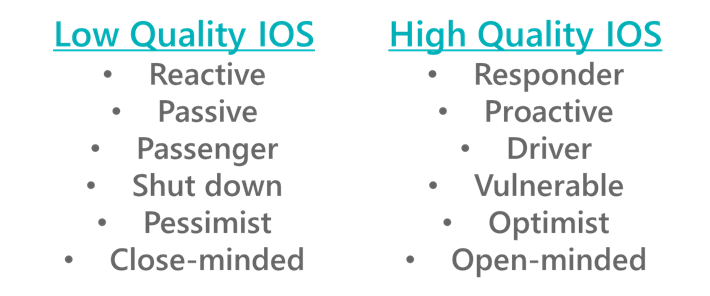Can you answer the following questions:
- Do people have an internal operating system (IOS)?
- Do you have a sense of what our internal operating system is?
- Do you think that the quality and sophistication of people’s internal operating systems differ?
- How can you tell? What are the signs that indicate this?
In this article, I will briefly answer these questions. And, in answering these questions, I believe that you will be able to see more profoundly than ever that the key to your transforming yourself and others lies in focusing on our internal operating system.
1. Do people have an internal operating system?
Computers have an internal operating system that:
- Controls and regulates the computer
- Operates automatically
- Undergirds everything that the
computer does - Contains programming that it is prone to replicate
Do humans have an operating system that functions similarly?
- Controls and regulates them
- Operates automatically
- Undergirds everything that they do
- Involves programming that it is prone to replicate
The answer is, “Yes.” We do have an internal operating system that does these things.
2. Do you have a sense of what our internal operating system is?
Our internal operating system is our nervous system.
What are the primary jobs of our nervous system? They include:
- Keeping us alive
- Protecting us
- Regulation (bodily, emotionally, neurologically, etc.)
- Direct us away from pain and toward pleasure
3. Do you think that the quality and sophistication of people’s internal operating systems differ?
Short answer, “yes!”
4. How can you tell? What are the signs that indicate this?
I asked my students this question, and they came up with some great answers:

Another great answer is:
- People with a low quality IOS have a narrow window of tolerance
- People with a high quality IOS have a wide window of tolerance
(I have found it interesting that most people have not heard of “window of tolerance.” If that is you, here is a great introduction to this concept: Window of Tolerance and Emotional Regulation (Dr Dan Siegel))

Key Takeaway
We need to recognize that our internal operating system is the most foundational aspect about ourselves and how we operate.
People with low quality IOSs are not as effective or as enjoyable as people with high quality IOSs.
Most Development Efforts
Despite this, most development across education, athletics, personal development, and leadership development largely ignores our internal operating system.
Instead, most development efforts focus on what is called Horizontal Development, which emphasizes the gaining of knowledge, skills, and competencies.
Rethinking Development
If we want to upgrade our internal operating system and transform/elevate ourselves, we need to focus on a form of development called Vertical Development. It is a development approach that specifically focuses on upgrading, refining, and transforming our internal operating system so that we can operate with greater levels of cognitive and emotional sophistication.
If you are focusing on upgrading IOSs or vertical development in your personal development work or in the development work you do with others, you are not likely to be very effective.
I hope this article helps you to rethink your developmental strategy.
Importance of Focusing on our Internal Operating System
This week, I was sent an article where the author identified the 10 Traits of Fearless Leaders. They were identified as:
- Growth mindset
- Emotional intelligence
- Courageous authenticity
- Resilience
- Visionary perspective
- Adaptive Flexibility
- Decisive action
- Empowering others
- Lifelong learning
- Inspirational presence
Are these traits that can be developed via Horizontal Development and the gaining of knowledge and skills? No!
These traits requires an upgrade and/or transformation of our internal operating system via Vertical Development.
What’s Next?
If you want the gauge the quality of your internal operating system, take my FREE Assessments:
If you want to more fully harness the power of Vertical Development in your personal development efforts, check out my latest book: The Elevated Leader: Level Up Your Leadership Through Vertical Development.
If you want me to help you integrate vertical development work into your personal, leadership, or organizational development efforts, let’s connect.










